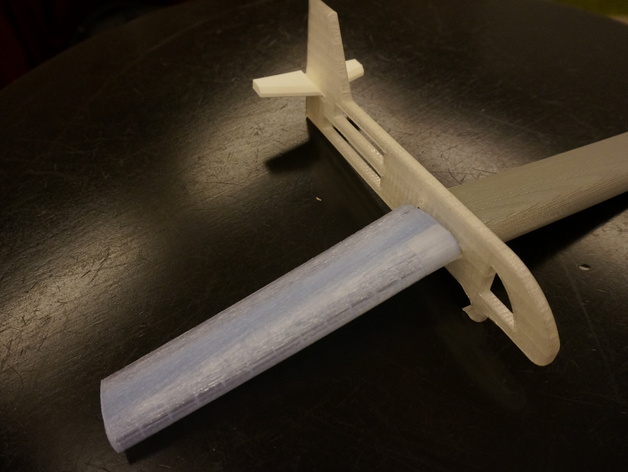
Airplane Wing Variations
thingiverse
Project: Optimized Airplane Wing Design for Peak Performance Print Settings: Printer Brand: MakerBot Printer: MakerBot Replicator (5th Generation) Rafts: Yes Supports: No Resolution: Standard Infill: 5% Notes: We began with standard printer settings. To reduce print time and part weight, we decreased the infill to 5% without compromising structural integrity. Design Process: This project was a collaborative effort at a Makeathon workshop. The printed parts have not been flight-tested and may require modifications. As they were not designed mathematically for maximum aerodynamic performance, it is recommended that instructors refine the design before presenting to students. To ensure proper assembly, we separately printed the tail and body components, but our initial attempt resulted in a misfit due to inadequate tolerances. It was suggested that only printing connecting parts would save time and facilitate precise joint formation. Our wing and airfoil designs utilized straws or dowels for construction, allowing users to choose their preferred method. This alternative approach aimed to complement the traditional foam tray airplanes originally planned. More advanced students can explore more complex designs beyond what the lesson plan allows using AutoDesk Inventor software. Overview and Background: In this project, students will investigate airplane wing design (airfoil shape, size, and wing angle) to determine which configuration achieves optimal flight performance. The project is divided into three levels: beginner, intermediate, and advanced. -Beginners will utilize pre-provided parts to test various wing designs and angles. -Intermediate students will experiment with different airfoils wrapped in various materials to identify the most effective shape. -Advanced students will use design software to create a custom wing design that meets performance criteria. Lesson Plan and Activity: This lesson is based on the Navy's STEM in the Classroom Lesson Plan found here: http://www.navystemfortheclassroom.com/sites/navystemfortheclassroom.com/files/lesson-plans/documents/JetsInFlightLessonPlan_Final_0.pdf. A copy of this lesson can be found in thing files, along with a PowerPoint Presentation to accompany your class. The only modification is the materials list provided to students on page 24 of the attached presentation. Objectives: Students will learn about the physics of flight and, depending on their level, use design software to create their own wing design meeting performance criteria. Audience: Grades 9-12 Subjects: Science (physics) and Math Skills Learned: National Science Education Standards Science as Inquiry Identify questions and concepts guiding scientific investigations Design and conduct scientific investigations Use technology and mathematics to enhance investigations and communications Formulate and revise scientific explanations using logic and evidence Communicate and defend a scientific argument Physical Science: Use mathematics and logic to explain scientific principles Science and Technology: Identify a problem or design an opportunity Propose designs and choose between alternative solutions Implement a proposed solution Evaluate a solution and its consequences Communicate the problem, process, and solution
With this file you will be able to print Airplane Wing Variations with your 3D printer. Click on the button and save the file on your computer to work, edit or customize your design. You can also find more 3D designs for printers on Airplane Wing Variations.
